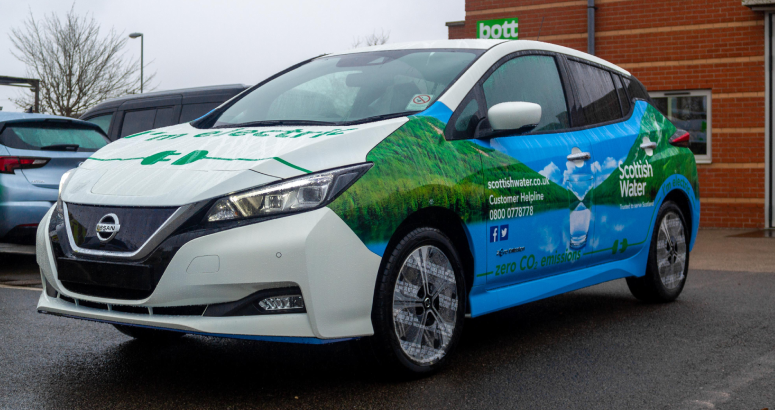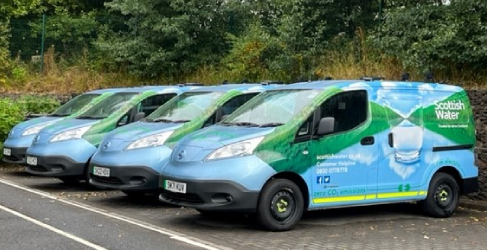BLOG: Greener Miles Make Scottish Water Fleet Better for Environment - Holly McPhee
29 September 2022
Becoming Net Zero
Our transport accounts for six per cent of Scottish Water’s carbon emissions
Transport might account for just six per cent of Scottish Water’s carbon emissions – but with more than 1500 diesel vehicles on the road currently travelling over 19 million miles annually delivering vital services to customers and communities, it’s no small task to change the way we do things.
In 2019, the Scottish Government – Protecting Scotland’s Future mandate established the tone for public sector fleets transitioning to net zero, setting a target of 2040.
Scottish Water has shown that it is serious about decarbonising its operations, especially within the area of fleet. We have committed that by 2025 there will be no purchasing of new diesel or petrol light commercial vehicles. And we’re serious about doing even more to make a difference and reduce emissions.
The Electric Vehicle (EV) team mobilised in 2021 focusing on both transitioning of the fleet and introducing charge points throughout the country at office locations, depots and treatment works. Currently, there are 25 electric vans on the road, 12 fully electric pool cars and we operate an electric car only scheme for managers and a salary sacrifice scheme. Our recent work with Nissan showed what’s possible in this area of our operations.
In 2019, the Scottish Government – Protecting Scotland’s Future mandate established the tone for public sector fleets transitioning to net zero, setting a target of 2040.
Scottish Water has shown that it is serious about decarbonising its operations, especially within the area of fleet. We have committed that by 2025 there will be no purchasing of new diesel or petrol light commercial vehicles. And we’re serious about doing even more to make a difference and reduce emissions.
The Electric Vehicle (EV) team mobilised in 2021 focusing on both transitioning of the fleet and introducing charge points throughout the country at office locations, depots and treatment works. Currently, there are 25 electric vans on the road, 12 fully electric pool cars and we operate an electric car only scheme for managers and a salary sacrifice scheme. Our recent work with Nissan showed what’s possible in this area of our operations.


The approach is to move to alternative fuelled vehicles ensuring it’s economically and practically viable. Technology has developed such that we may be able to start to replace our small and medium vans with EV, which represents c.60% of our vehicles.“Scottish Water has shown that it is serious about decarbonising its operations, especially within the area of fleet. We have committed that by 2025 there will be no purchasing of new diesel or petrol light commercial vehicles. ”
Holly McPhee
EV Transition Lead, Scottish Water
The EV Team has launched a transition plan to replace all small and medium sized vans with electric alternatives when they can. Each decision is made based on the vehicle’s location, where it ‘sleeps’ at night and its average daily mileage to ensure no operator’s daily duties will be affected by the change.
In the coming years, once technology has improved, the EV team will focus their efforts on transitioning large vans and HGVs with electric or alternatively fuelled vehicles e.g., HVO and hydrogen. Market options are currently quite limited and given how heavily converted our vehicles are, there are no current viability. However, the EV team is continuously trialling new technologies and models being launched by manufacturers globally.
Scottish Water will have over 100 electric vans on the road by the end of 2023. Our expectations and ambitions are high and supporting these vehicles is imperative to their success. Charging points are being carefully planned and installed by contractors throughout the country, including our islands sites. These will predominantly support the EV fleet but are also bookable for all SW employees who may have an electric car, further reducing our mileage emissions footprint.
A new all-employee salary sacrifice initiative launched in August provides access EVs at a lower cost than a personal lease agreement. More than 600 people have already signed up and there have been 40 orders over the first few weeks.
So, while we’ve made progress, we have some distance to go yet. Our fleet – one of the most instantly recognisable on the roads – is an important element of our Scottish Water-wide activities to lessen our impact on the planet.







